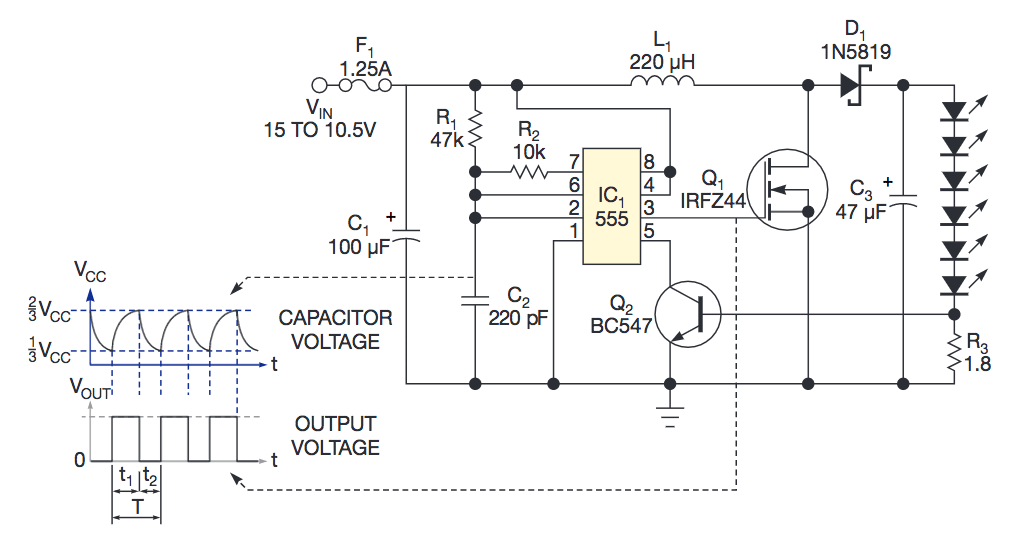If you’re a hobbyist looking to dive into the world of electronics, selective soldering might be the skill you need to take your projects to the next level. But what exactly is selective soldering, and how can you get started at home? In this beginner's guide to selective soldering, we’ll walk you through the essentials—equipment, materials, and techniques—so you can confidently tackle DIY projects with precision and efficiency. Whether you’re building custom circuits or repairing gadgets, this detailed resource will help you master selective soldering for home use.
Selective soldering is a specialized process used to solder specific components on a circuit board while avoiding others, making it ideal for intricate or mixed-technology assemblies. Unlike wave soldering, which applies solder to an entire board, selective soldering targets individual areas with precision. For hobbyists, this means better control over small-scale projects. Let’s explore everything you need to know, from the right tools to step-by-step techniques, in this comprehensive guide.
What Is Selective Soldering and Why Should Hobbyists Care?
Selective soldering is a technique that allows you to apply solder to specific pins or components on a printed circuit board (PCB) without affecting nearby areas. This method is particularly useful for hobbyists working on complex designs with through-hole components, surface-mount devices, or heat-sensitive parts. Unlike traditional hand soldering, which can be time-consuming for multiple connections, or wave soldering, which requires industrial setups, selective soldering offers a middle ground—precision and efficiency for small-scale work.
For hobbyists, learning selective soldering can save time, reduce errors, and improve the quality of your builds. It’s especially handy for projects involving mixed assemblies where some components can’t withstand high heat. By mastering this skill, you can work on advanced DIY electronics with confidence, whether you’re crafting custom gadgets or repairing household devices.
Getting Started: Understanding the Basics of Selective Soldering
Before diving into equipment and techniques, let’s break down the core concept of selective soldering. The process typically involves a small, controlled nozzle or tip that delivers molten solder to specific points on a PCB. This can be done manually with specialized tools or with automated machines for more consistent results. For hobbyists, manual or semi-automated setups are often the most practical and affordable for home use.
The key advantage of selective soldering is its ability to target precise areas, minimizing thermal stress on delicate components. This makes it ideal for boards with a mix of through-hole and surface-mount parts, where uniform heating could damage smaller elements. With the right setup, hobbyists can achieve professional-grade results without industrial equipment.
Selective Soldering Equipment for Home Use: What You Need
Setting up for selective soldering at home doesn’t require a full industrial workshop, but you do need the right tools to ensure safety and precision. Here’s a breakdown of the essential selective soldering equipment for home use, tailored for hobbyists on a budget.
1. Soldering Station or Iron with Fine Control
A high-quality soldering station with adjustable temperature control is the foundation of any soldering setup. For selective soldering, look for a station with a fine tip or a specialized nozzle attachment that allows you to direct solder precisely. Temperature control is critical—most hobbyist projects require a range of 250°C to 350°C, depending on the solder type and component sensitivity.
Digital stations with quick heat-up times and stable temperature regulation are ideal. A 40-60 watt iron is usually sufficient for home use, providing enough power for through-hole components without overheating smaller parts.
2. Selective Soldering Nozzles or Tips
Unlike standard soldering tips, selective soldering often uses custom nozzles designed to deliver solder to specific points. These can be cone-shaped or mini-wave tips that create a small flow of solder. For hobbyists, interchangeable tips compatible with your soldering station are a cost-effective option. Ensure the tip size matches the scale of your components—smaller tips (0.5mm to 1mm) for fine work, larger ones (2mm to 3mm) for bigger pins.
3. Solder Wire and Flux
Choosing the right solder and flux is crucial for clean, reliable connections. For selective soldering, use lead-free solder wire with a rosin core, typically with a diameter of 0.8mm to 1.2mm. A 60/40 tin-lead solder can also work if local regulations allow, offering a lower melting point (around 183°C) for easier application.
Flux is equally important—it cleans the soldering area and improves solder flow. Liquid flux or flux pens are ideal for selective soldering, as they allow precise application to targeted pins. Avoid over-applying, as excess flux can leave residue that requires cleaning.
4. PCB Holders or Vises
A steady hand is vital for selective soldering, and a PCB holder or vise can make all the difference. These tools secure your board in place, allowing you to focus on precision without worrying about movement. Look for adjustable holders with clamps or magnetic bases for flexibility in positioning.
5. Safety Gear and Ventilation
Soldering produces fumes that can be harmful if inhaled, so proper ventilation is a must. Work in a well-ventilated area or use a fume extractor. Additionally, wear safety glasses to protect your eyes from solder splashes, and keep a fire extinguisher nearby for emergencies. Heat-resistant gloves can also protect your hands when handling hot components.
Materials for Hobbyist Soldering: Building Your Toolkit
Beyond the core equipment, having the right materials for hobbyist soldering ensures smooth workflows and high-quality results. Here’s a list of must-have supplies to complement your selective soldering setup.
- Solder Wick or Desoldering Braid: Mistakes happen, and a solder wick helps remove excess or misplaced solder. Choose a braid width of 1.5mm to 2mm for most hobbyist tasks.
- Cleaning Supplies: Isopropyl alcohol (90% or higher) and a small brush are perfect for cleaning flux residue from your PCB after soldering. Cotton swabs can help with tight spots.
- Heat-Resistant Mats: Protect your workspace with a silicone or fiberglass mat that can withstand high temperatures (up to 500°C).
- Magnifying Glass or Loupe: For intricate work, a magnifying tool with 3x to 5x magnification helps inspect solder joints and ensure precision.
- Thermal Paste (Optional): If working with heat sinks or components requiring thermal management, a small tube of thermal paste can improve heat dissipation.
Stocking these materials ensures you’re prepared for any challenge during your selective soldering projects. Keep them organized in a dedicated toolkit for easy access.
Soldering Techniques for Beginners: Step-by-Step Guide
Now that you have your equipment and materials, let’s dive into soldering techniques for beginners. Selective soldering requires patience and practice, but following these steps will help you achieve clean, reliable connections.
Step 1: Prepare Your Workspace and Components
Start by setting up a clean, well-lit workspace with all tools within reach. Secure your PCB in a holder to prevent movement. Check that your components are correctly placed on the board, and trim any excess leads to about 1-2mm above the board for through-hole parts. Apply a small amount of flux to the target pins or pads to improve solder flow and reduce oxidation.
Step 2: Heat Your Soldering Iron or Nozzle
Turn on your soldering station and set the temperature based on your solder type. For lead-free solder, aim for 300°C to 350°C; for tin-lead, 250°C to 300°C is usually sufficient. Allow the iron or nozzle to reach full temperature (most modern stations take 30-60 seconds) before proceeding. Tin the tip by applying a thin layer of solder to prevent oxidation and ensure better heat transfer.
Step 3: Apply Solder to Targeted Areas
Position the nozzle or tip over the specific pin or pad you’re soldering. Gently touch the tip to the joint, allowing it to heat the area for 1-2 seconds. Then, feed a small amount of solder wire into the joint—not directly onto the tip. The solder should melt and flow evenly around the pin, forming a shiny, concave fillet. Avoid applying too much solder, as this can create bridges between pins.
Step 4: Inspect and Clean the Joint
Once the solder cools (about 3-5 seconds), inspect the joint under magnification. A good solder joint should be smooth, shiny, and free of cracks or cold spots. If you notice issues like dullness or excess solder, reheat the joint and adjust as needed. After soldering, clean the area with isopropyl alcohol and a brush to remove flux residue, which can cause corrosion over time.
Step 5: Repeat for Other Connections
Move on to the next targeted area, repeating the process with care. Take breaks if you’re working on a large board to avoid hand fatigue or overheating components. Selective soldering is about precision, not speed—take your time to ensure each joint is perfect.
Building a DIY Selective Soldering Machine: Is It Worth It?
For hobbyists looking to streamline repetitive tasks, a DIY selective soldering machine might sound appealing. While commercial machines can cost thousands of dollars, a homemade setup can be built for a fraction of the price using off-the-shelf components and a bit of creativity. However, it’s important to weigh the pros and cons before diving into this project.
Pros of a DIY Setup
- Cost-Effective: A basic DIY machine can be assembled for under $200 using a small solder pot, a programmable controller, and a custom nozzle system.
- Customizable: You can tailor the design to your specific needs, adjusting nozzle size or automation level.
- Learning Experience: Building your own machine teaches valuable skills in electronics and mechanics.
Cons to Consider
- Time-Intensive: Designing and assembling a functional machine can take weeks or months of trial and error.
- Safety Risks: Working with molten solder and custom electronics poses risks if not done with proper precautions.
- Limited Precision: DIY setups often lack the accuracy of commercial systems, especially for very small components.
If you decide to build a DIY selective soldering machine, start with simple designs using online tutorials or open-source plans. Focus on safety by incorporating temperature controls and emergency shutoffs. For most hobbyists, manual selective soldering with a quality station is sufficient and far less complex to manage.
Tips for Successful Selective Soldering at Home
To wrap up this beginner's guide to selective soldering, here are some practical tips to enhance your skills and avoid common pitfalls.
- Practice on Scrap Boards: Before working on a valuable project, practice your technique on old or damaged PCBs to build confidence.
- Control Heat Exposure: Limit soldering time to 3-5 seconds per joint to prevent damage to components or board traces. If a joint doesn’t form, let it cool before retrying.
- Use Minimal Solder: Over-soldering can create shorts or bridges. Aim for just enough solder to form a clean fillet—typically 0.5-1mm of wire per joint.
- Keep Tips Clean: Regularly clean your soldering tip with a damp sponge or brass wire cleaner to remove oxidation and maintain heat transfer.
- Stay Organized: Label components and keep your workspace clutter-free to avoid mistakes during soldering.
Conclusion: Start Your Selective Soldering Journey Today
Selective soldering is a game-changer for hobbyists eager to tackle intricate electronics projects with precision. By investing in the right selective soldering equipment for home use, stocking essential materials for hobbyist soldering, and mastering basic soldering techniques for beginners, you can achieve professional-quality results from the comfort of your workshop. Whether you’re exploring a DIY selective soldering machine or sticking to manual methods, the skills you develop will open up endless possibilities for creativity and repair.
Take the first step by setting up your workspace with the tools and materials outlined in this guide. With practice and patience, you’ll soon be soldering like a pro, bringing your DIY electronics projects to life with confidence. Remember, every expert started as a beginner—so start small, stay safe, and enjoy the process of learning selective soldering!
 ALLPCB
ALLPCB







